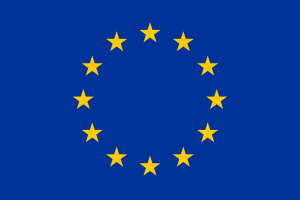Urgent action needed to reverse soil degradation in Europe

Soil degradation threatens our competitiveness, food security, agricultural productivity, biodiversity, and resilience to extreme weather events and climate change. Joint efforts at EU, national, and local level focus on restoring soil health.
Launched during the EU Soil Observatory Stakeholder Forum, the 2024 State of Soils in Europe report assesses the state of soil degradation across the EU and other countries in the European Economic Area, including Ukraine, Türkiye, and the Western Balkans. The report shows alarming status and trends, with soil degradation getting much worse in recent years, and highlights the need for immediate action to reverse this trend.
For example, overall soil erosion is estimated to amount to 1 billion tonnes per year across the EU. At present date, approximately a quarter (24%) of EU soils are affected by water erosion, mainly in cropland, with projections referring to a possible increase of 13-25% by 2050. Unsustainable water erosion affects about a third (32%) of agricultural land. The mechanical agitation of soil, a common practice in agriculture, can also initiate soil degradation. This phenomenon, called tillage erosion, can have a significant impact on cultivated fields. Other forms of erosion include wind erosion and crop harvesting, among others.
Nutrient imbalancesare also on the rise: they are now estimated to affect 74% of agricultural land. These changes to the composition of soil can have negative consequences. For example, nitrogen surplus is increasing and can be harmful to human health, crops, eco-systems, and the climate. Meanwhile, soil organic carbon, which is essential to keeping soil healthy, is decreasing in agricultural areas. An estimated 70 million tonnes of this organic carbon were lost from the mineral soils of croplands across the EU and UK between 2009 and 2018.
The degradation of peatlands is also concerning. These wetlands are essential carbon sinks: they absorb greenhouse gases from the atmosphere and store them, contributing to mitigate climate change. When they deteriorate, peatlands can release those gases back into the atmosphere. In the EU, peatland drainage is responsible for around 5% of total greenhouse gas emissions. 50% of peatlands in the EU are now estimated to be degraded, many of which have been irreparably damaged.
Outside the EU, the situation is similarly dire – particularly in Ukraine, where military activities have caused severe soil destruction. Over 10 million of Ukraine’s 60 million hectares of land are estimated to be degraded because of Russia’s invasion. Recovery from this damage could take decades or even centuries. In Türkiye, approximately 1.5 million hectares of land have salinity issues, which can impact both agricultural productivity and ecosystem health. The Western Balkans have reported over 100 identified contaminated or potentially contaminated sites due to mining and industrial activities, although the true extent of soil pollution in these areas remains unknown.
The importance of soil monitoring and new legislation
The State of Soils in Europe report is a collaboration between the Joint Research Centre and the European Environment Agency. It sets out the scale of the problem facing Europe today, but it also aims to reinforce and build capacities among the soil research community, while enhancing the engagement of soil users and society.
The EU Soil Observatory (EUSO) has already laid the foundation for better soil monitoring, using advanced tools to improve the quality of data on soil erosion, soil organic carbon levels, and nutrient imbalances. Together with other collaborations and soil monitoring networks, EUSO is also giving a clearer understanding of how agricultural practices and climate change are impacting Europe’s soils.
The EU Soil Monitoring Law aims to ensure that soil degradation is assessed more accurately by creating a monitoring framework, to promote sustainable soil management and to identify potentially contaminated sites. It will standardise data collection across EU member states, ensuring that the insights gathered by EUSO and initiatives like the Land Use/Cover Area frame Survey (LUCAS-Soil) are implemented effectively.
As part of the common agricultural policy (CAP), the sustainable use of agricultural soils is already supported through the CAP Strategic Plans in all Member States by a mix of mandatory and voluntary measures for farmers. For the period 2023-2027, 47% of the European farmland (compared to 15% in the past) will receive support for actions aimed at improving soils or avoiding soil degradation, including by water erosion.
The EU Mission ‘A Soil Deal for Europe’ is a large-scale applied R&D funding programme that supports the EU soil strategy, the upcoming Soil Monitoring Law, and the CAP. The Mission funds actions to establish harmonised soil health monitoring in the EU; to develop and promote the adoption of sustainable soil management practices and technologies to restore soil health; and to provide advice and education on soil health to managers and citizens. The Mission has invested €435 million so far and has created the first of a network of 100 living labs, with more than 1000 testing sites across a wide range of land-use sectors (agriculture, forestry, industry, urban and regional planning) across Europe. The Mission currently encompasses 50 projects, which are contributing to increase and improve the knowledge of the state of soils in the EU.
Protecting our soils: a shared responsibility
Tackling soil degradation is vital for achieving the EU’s environmental, agricultural, and climate goals. The numbers are clear: soil degradation has worsened significantly in the last decade, but with collective action, enhanced monitoring, and legislative support, the EU can restore this vital resource and ensure a sustainable future for generations to come.
Background:
The EUSO Stakeholder Forum serves as the platform for the formal presentation of the 2024 report, bringing together experts, policymakers, and stakeholders from across Europe. Discussions focus on future strategies for reversing soil degradation trends, with particular attention to the upcoming soil legislation and how it facilitates more comprehensive restoration efforts across the continent. With the EU Soil Strategy, the EU Soil Mission, and the Soil Monitoring Law on the horizon, the EU is positioning itself to implement coordinated actions that could dramatically improve soil health in the coming years.
Related links
JRC report: The state of soils in Europe
European Soil Data Centre (ESDAC)
Land Use and Coverage Area frame Survey (LUCAS) project





